Aug 1, 2013 | art history, sculpture
Antonio Corradini lived from 1668 until June 1752, and he worked as a Rococo sculptor in Venice. There’s not a lot known about him, but he’s most famous for his veiled women, and it’s not hard to see why.
Her smooth skin shines right through the thin ripples of the veil resting softly – it spills off noses and ears like tiny waterfalls of marble. But the eyes can always be seen so clearly, closed against the veil pressed against them.
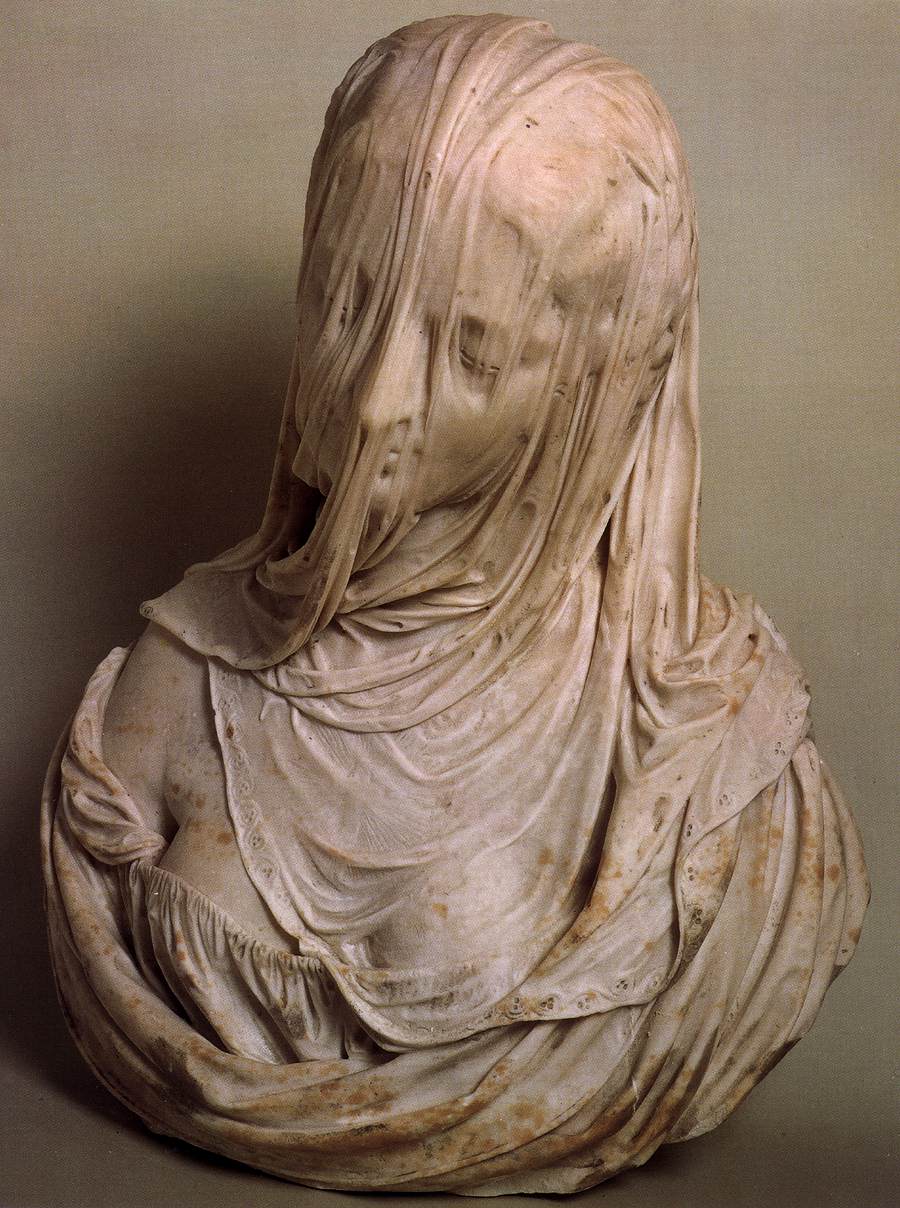
Bust of a Veiled Woman (Puritas), 1717-25
Marble
Museo del Settecento Veneziano, Ca’ Rezzonico, Venice
source.
Corradini played a huge role in solidifying the role of sculptors as ‘artists’ in the early 18th century. In 1723 he is supposed to have been the first person to legally separate the professions of sculptors and stonemasons, creating a school for sculptors and developing it as an official artistic profession.
His “Portrait of Modesty” (below) lives in the Naples museum, Cappella Sansevero, and her posture and accessories make it look like she was made for a church, even though she’s nearly naked through that thin thin veil – standing casually beautiful with eyes closing.


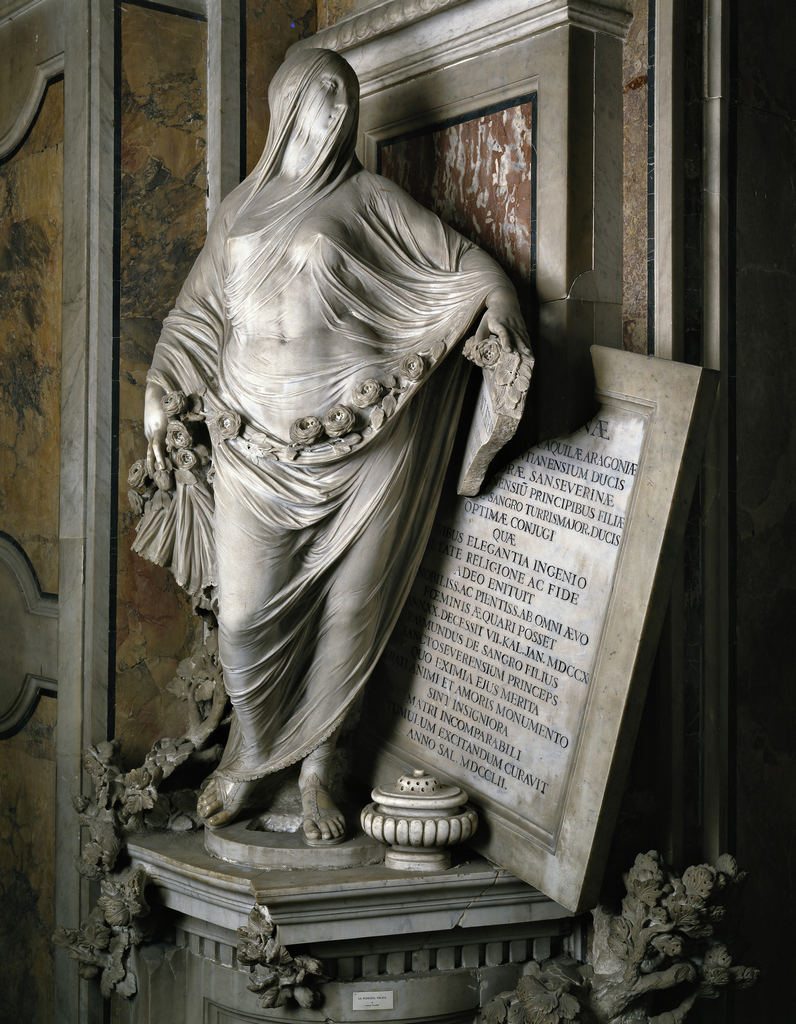
“Modesty,” 1751
Marble, Cappella Sansevero, Napoli
source.
Full disclosure: all info from Corradini’s Wikipedia page.
GD Star Rating
loading...
Jul 15, 2013 | photography, surreal
The jaw-dropping effects that photo-manipulation technology allows for kind of takes my breath away. Especially the works by Erik Johansson, a photographer and retoucher from Sweden who’s currently working in Berlin. He sees photography as an outlet that allows his ideas to be fully realized, trying to make each image look as realistic as possible.
“I don’t capture moments, I capture ideas,” he says. “I get inspired by things around me in my daily life and all kinds of things I see.”

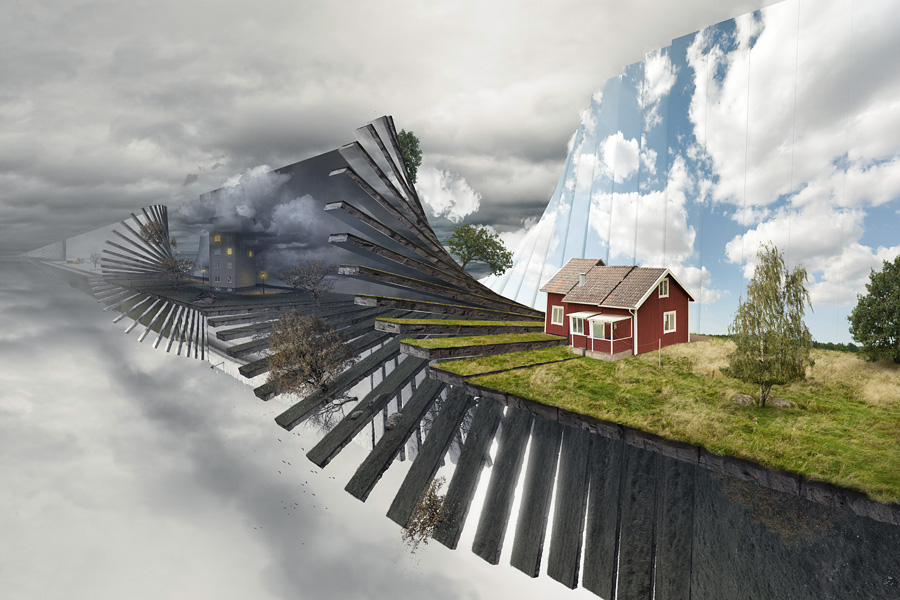
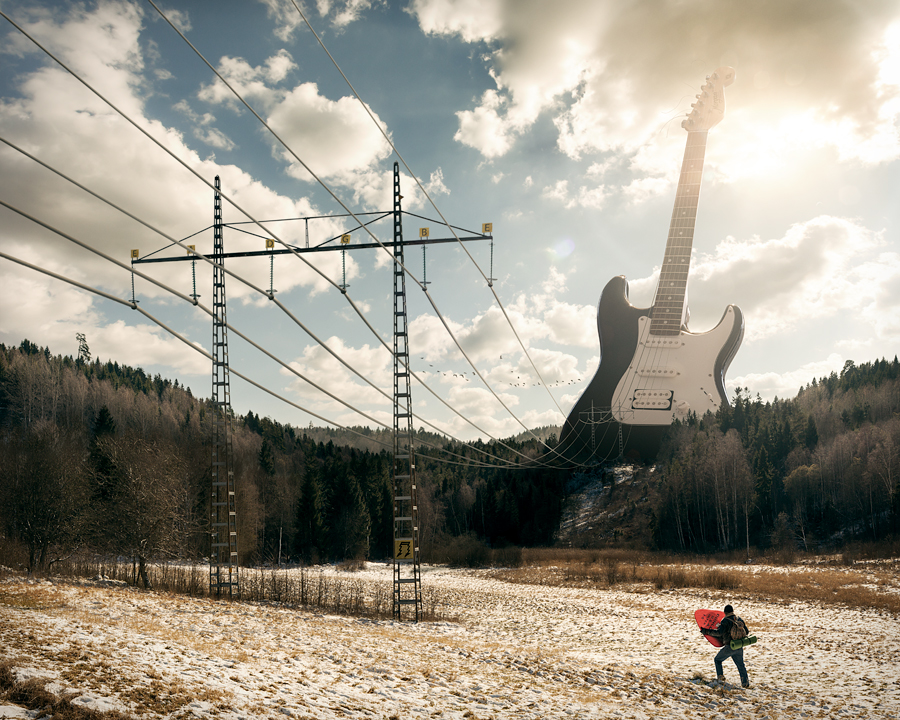
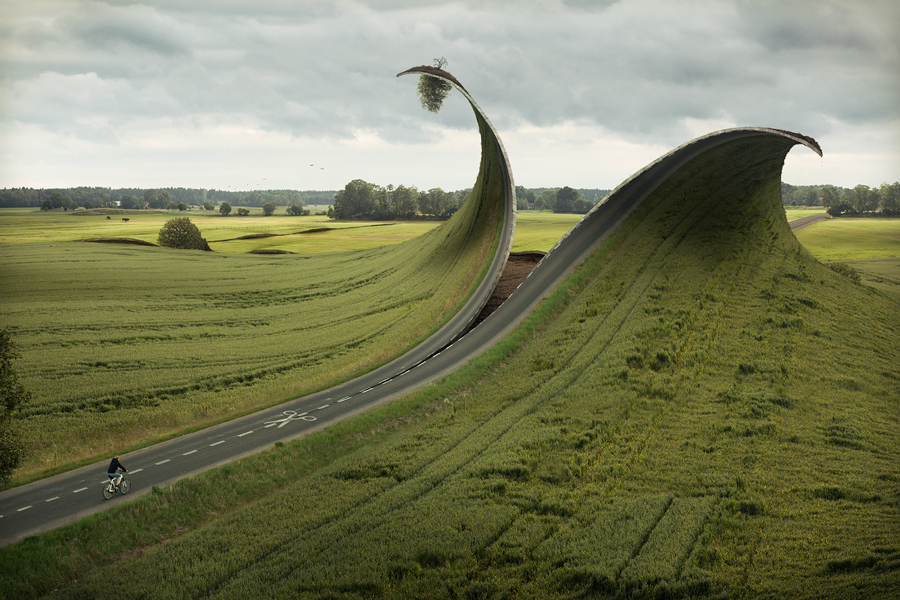
Watch Erik’s TED Talk for more:
For more of Erik’s work, see his website.
Source: Visual News.
GD Star Rating
loading...
Apr 5, 2013 | illustration
Thick paint drips down her face in a color close the skin’s; it covers and reveals hair and flesh wherever gravity takes it.
Melissa Cooke’s series “Surfaced” analyzes obscured faces – faces covered in liquids and warped by Xerox machines in ways that make you wonder where the real skin actually begins and ends. But these aren’t photographs, so none of it is really real anyways – they’re graphite drawings that capture every follicle and wrinkle, every tug and pull of skin, and they immerse you in a world that plays with texture and perception in bold closeup ways, gathering intensity from details.
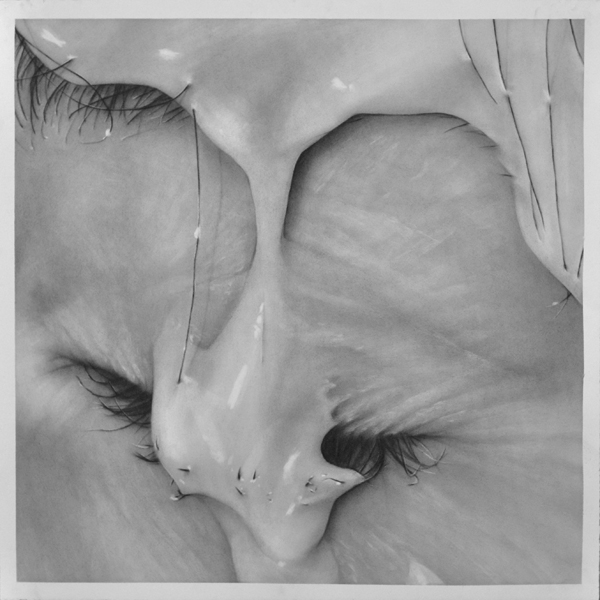
Trickle, graphite on paper, 24 ” x 24 “
Paint and hair don’t function harmoniously the way paint and skin do. Hair isn’t manageable and flat – it pokes through the liquid that’s attempting to cover it, refusing to be masked or hidden. In “Surfaced,” this is the role of the eyelashes and eyebrows, lines of rebellion against the paint, breaking through the color the same way the lines in the skin do.
They become something different because the paint gives them an alias, a form of cover, but the most substantive parts can’t be completely obscured. The paint dips into the flesh’s crevices, filling and amplifying the lines that have come from years of smiling and crying.
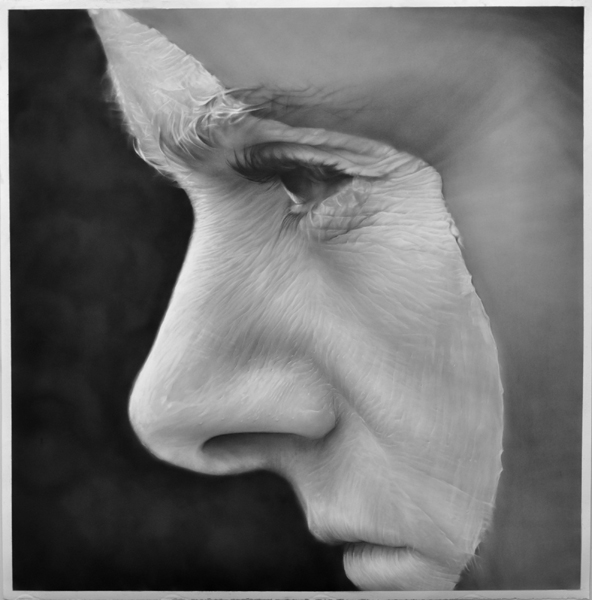
Crested, graphite on paper, 50 ” x 50 “
According to Melissa’s description of the series, “Surfaced” works to examine the relationship between photography, painting and drawing in portraiture. She used her own face as a canvas, painting and pouring liquids onto herself as she took photographs. Then, she used those photos to create her graphite drawings.
“The photo shoot references the practice of drawing and painting; then the final graphite drawing references photography,” she said, “The boundaries between the mediums are broken down and the processes are interwoven.”
She purposefully focused on zoomed in sections of her face, obscuring the notion of the portrait and concentrating on humanness in general as opposed to one specific human:
“The cropping pushes the face to the surface of the paper, making the figure more ambiguous. Flesh becomes abstracted: obliterated by paint on the skin, distorted by the eye of the camera lens, or smeared by the glass of a Xerox machine.”
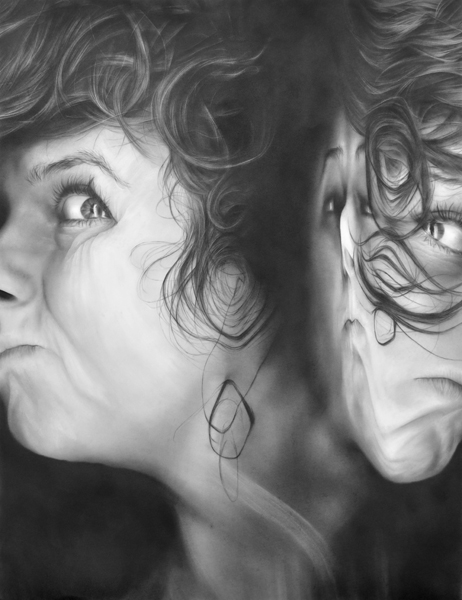
Xerox #5, graphite on paper, 50 ” x 38 “
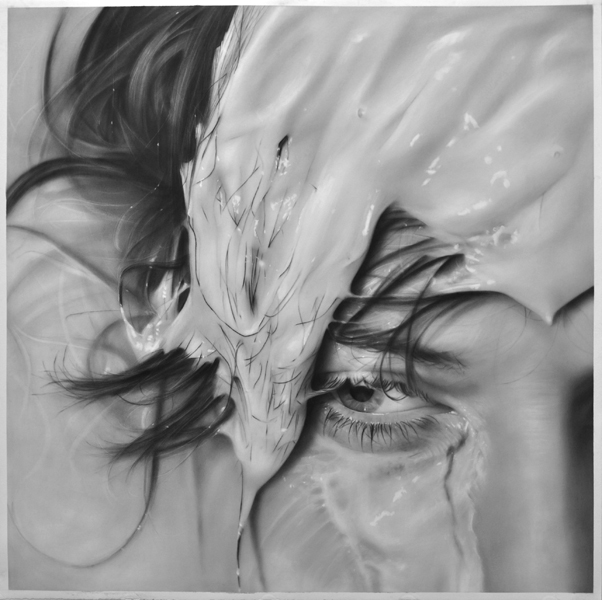
Washed Out, graphite on paper, 50 ” x 50 “
Melissa Cooke, 30, is an artist originally from Wisconsin specializing in these kind of intricate graphite drawings that examine the relationships between photography, performance, and drawing in portraiture.
She makes her drawings by dusting thin layers of graphite onto paper with a dry brush, and then editing the soft graphite against the smooth paper by erasing in details and textures. She doesn’t use pencils at all, so more than anything it’s an art of subtraction instead of addition, likening it to sculpture in a way, as Melissa carefully chips away the spots of color that shouldn’t be there.
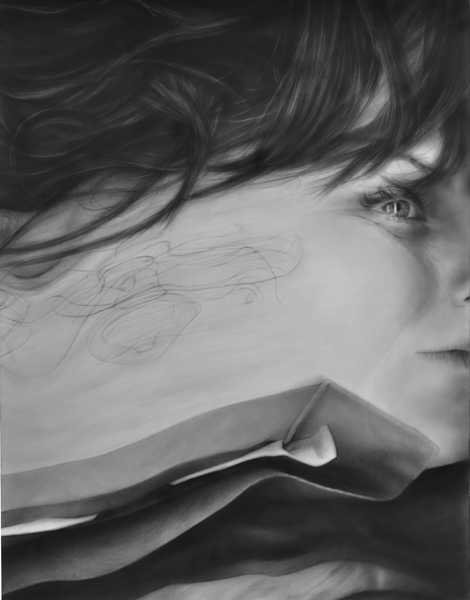
Xerox #1, graphite on paper, 50 ” x 38 “
See more from “Surfaced” and her other series of graphite drawings on Melissa’s website.
GD Star Rating
loading...

















